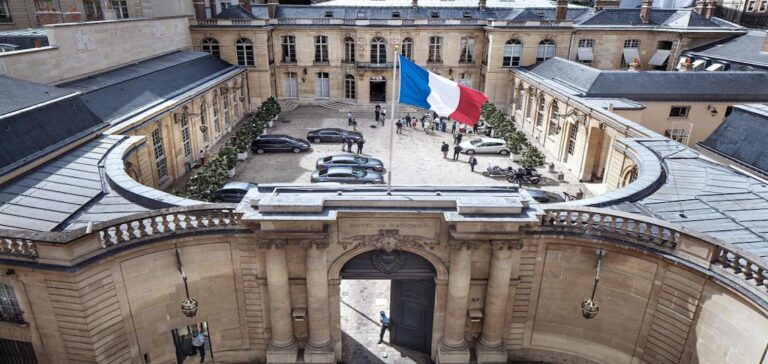The French government will mobilize an additional 7 billion euros in 2024 to double the rate of reduction in France’s greenhouse gas emissions and meet the 2030 targets, the Prime Minister announced on Saturday in an interview with Le Parisien/Aujourd’hui en France.
Public financing for the ecological transition: Investments and tax implications
“The State is going to do its part since, starting next year, we’re going to increase our contribution to the plan by 5 billion euros, over and above the 2 billion more we’d already earmarked”, so “in 2024, we’ll have 7 billion more than in 2023 for financing the ecological transition”, said Elisabeth Borne.
At the end of 2022, the government had already announced the mobilization of 2 billion euros for the Green Fund, designed to support local authorities’ ecological projects. In the 2023 budget, the State’s climate investments represented around 25 billion euros, according to Matignon.
“This is an unprecedented investment by the State that will be used to finance energy renovations, public transport, renewable energies and the agricultural transition,” she added, without specifying at this stage the source of this funding, which is to be discussed in the 2024 Finance Bill. “It doesn’t mean 7 billion in additional taxes, quite the opposite,” says his entourage, stressing that this figure corresponds to the order of magnitude of the spending cuts expected from the ministries. “This is new money, which will generate much more because it will be used in projects co-financed by the communities” as usual, adds the Prime Minister’s entourage.
The race for green financing: solutions and strategies to support the ecological transition
France must reduce its emissions by 50% below 1990 levels by 2030, in line with the European Union’s new targets. It was approaching a -25% reduction by 2022. To achieve the target, on May 22 the Prime Minister presented the first chapter of the plan, drawn up by her Ecological Planning Secretariat, detailing quantified reduction targets for each major sector of the economy.
This quantified breakdown of the effort was hailed as unprecedented and ambitious, but criticized for the absence of any announcement on funding, one of the main difficulties. On the same day, the Pisani-Ferry-Mahrouz report estimated that additional investment would cost 60 billion euros a year between now and 2030, half of which would be public money.
“Today, we invest 120 billion euros a year, all together, public and private sector, i.e. the State, local authorities, companies and households for actions in transport, buildings, industry, energy”, the Prime Minister recalled in her interview.






















